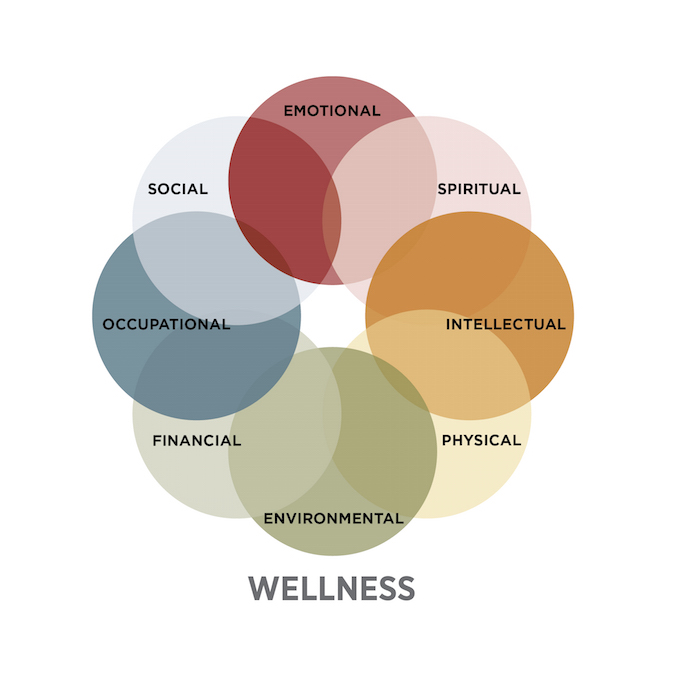Wellness is something many people aspire to achieve, but what is it? How do we make sense of this vague term? Is it being physically fit? Is it having stability in life? Is it maintaining recovery? SAMHSA defines wellness as “being in good physical and mental health” and notes “Wellness is not the absence of illness or stress. You can still strive for wellness even if you are experiencing these challenges in your life.”
To further make sense of wellness, this term is often viewed through the lens of what’s known as the Eight Dimensions of Wellness. The Eight Dimensions of Wellness were developed by Peggy Swarbrick and include:
- Emotional—Coping effectively with life and creating satisfying relationships
- Environmental—Good health by occupying pleasant, stimulating environments that support well-being
- Financial—Satisfaction with current and future financial situations
- Intellectual—Recognizing creative abilities and finding ways to expand knowledge and skills
- Occupational—Personal satisfaction and enrichment from one’s work
- Physical—Recognizing the need for physical activity, healthy foods, and sleep
- Social—Developing a sense of connection, belonging, and a well-developed support system
- Spiritual—Expanding a sense of purpose and meaning in life (SAMHSA, 2015)
This broadens the idea of wellness into something all people can continuously strive for and improve. Of course, we all face challenges, whether they be in our relationships, our physical health, our mental or behavioral health, our careers, our education – the list goes on. However, there are endless possibilities, despite those challenges, to make strides toward balance and abundance in these eight dimensions.
What’s great about this perspective on wellness is that there is no one way, and no right way, to wellness. For me, spiritual wellness might overlap with intellectual wellness and mean spending more time reading Alan Watts books. For someone else, intellectual wellness might mean enrolling in school. I generally get eight hours of sleep each night (or more!), so my physical wellness might include goals of maintaining activity and increasing healthy foods, whereas someone else may excel in those areas but desire support and techniques for getting enough Zs. The Eight Dimensions of Wellness provide a framework; and the goals we set, activities we engage in to reach those goals, and the timelines are unique, individualized, and up to each one of us. The Eight Dimensions are all about the whole person, each person.
What are some areas of wellness you’d like to improve?
(Spoiler Alert – SAMHSA’s Program to Achieve Wellness is creating a Wellness Mobile App to help support goal and activity tracking around the Eight Dimensions).



